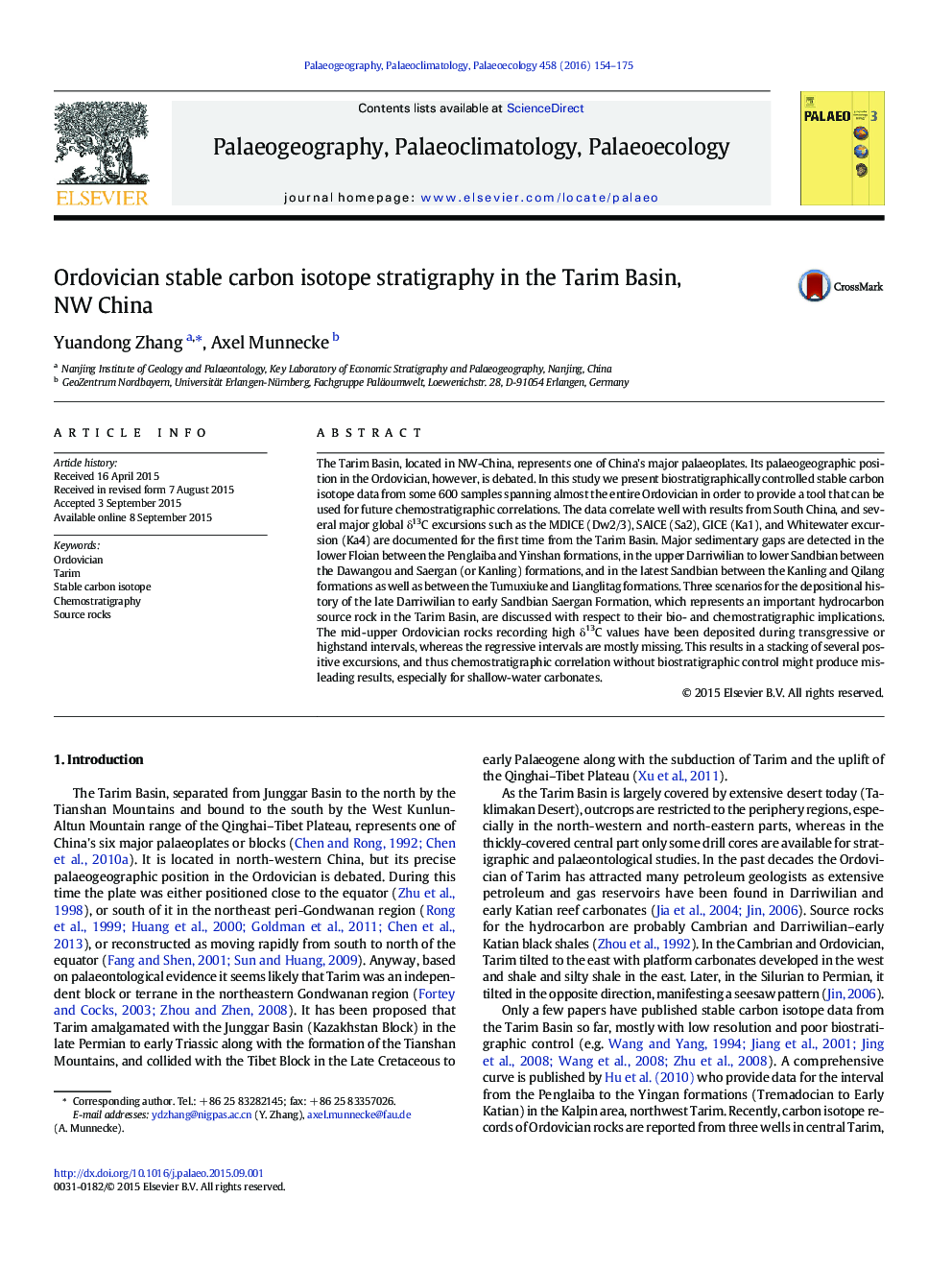| Article ID | Journal | Published Year | Pages | File Type |
|---|---|---|---|---|
| 4465587 | Palaeogeography, Palaeoclimatology, Palaeoecology | 2016 | 22 Pages |
•A detailed δ13C chemo- and biostratigraphy for the Ordovician of the Tarim Basin is presented.•The MDICE, SAICE, GICE, and Whitewater excursion have been documented from Tarim.•Several significant stratigraphic gaps have been discovered.•Some of the excursions, recorded in transgressive shallow-water carbonates, amalgamate.•A model is proposed for the Saergan Fm., which is an important hydrocarbon source rock.
The Tarim Basin, located in NW-China, represents one of China's major palaeoplates. Its palaeogeographic position in the Ordovician, however, is debated. In this study we present biostratigraphically controlled stable carbon isotope data from some 600 samples spanning almost the entire Ordovician in order to provide a tool that can be used for future chemostratigraphic correlations. The data correlate well with results from South China, and several major global δ13C excursions such as the MDICE (Dw2/3), SAICE (Sa2), GICE (Ka1), and Whitewater excursion (Ka4) are documented for the first time from the Tarim Basin. Major sedimentary gaps are detected in the lower Floian between the Penglaiba and Yinshan formations, in the upper Darriwilian to lower Sandbian between the Dawangou and Saergan (or Kanling) formations, and in the latest Sandbian between the Kanling and Qilang formations as well as between the Tumuxiuke and Lianglitag formations. Three scenarios for the depositional history of the late Darriwilian to early Sandbian Saergan Formation, which represents an important hydrocarbon source rock in the Tarim Basin, are discussed with respect to their bio- and chemostratigraphic implications. The mid-upper Ordovician rocks recording high δ13C values have been deposited during transgressive or highstand intervals, whereas the regressive intervals are mostly missing. This results in a stacking of several positive excursions, and thus chemostratigraphic correlation without biostratigraphic control might produce misleading results, especially for shallow-water carbonates.
